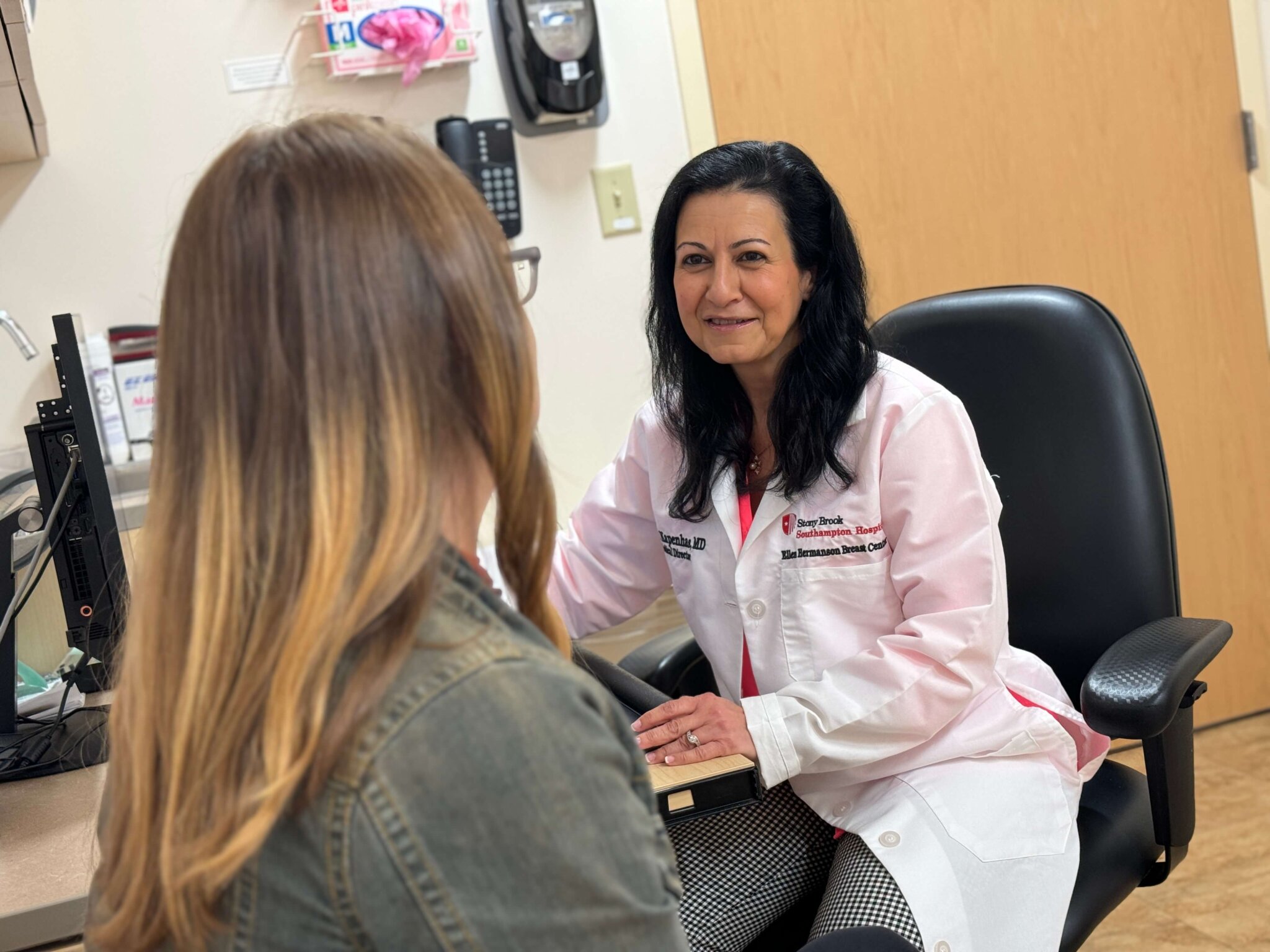Advances in Detection Help in Battle Against Breast Cancer

After a close relative contracted breast cancer about a decade ago, Laura J. Borghardt, Stony Brook Southampton Hospital’s Director of Cancer Services, had genetic testing done. When she found out she had the genetic component for the disease, she became even more vigilant.
“I started not only having my annual mammos, but MRIs,” she said. “They detected the breast cancer early.”
Borghardt then treated the breast cancer, an example of how early detection proved crucial in the constant battle against this all too common disease.
While breast cancer remains a huge threat to health, changes in detection and expanded recommendations to use the technology at a younger age are providing a more robust method of finding and often treating the disease.
“For breast cancer in particular, I still feel people don’t understand the need for screening,” Borghardt said. “And how important the screening process is in early detection.”
About one in eight women will contract breast cancer, impacting hundreds of thousands of Americans annually, according to the Centers for Disease Control and Prevention. “Mammograms continue to be the best tool for breast cancer screening and detection,” according to the Food and Drug Administration.
There have been major changes regarding mammography, one requiring people to be informed regarding breast density, which can impact results and accuracy. About half of women over the age of 40 in the United States have dense breast tissue, which can influence the accuracy of a mammogram, according to the FDA.
In the other, even bigger change, the U.S. Preventive Services Task Force shifted recommending mammography for women 40 and up rather than 50 and up.
“There has been a lot of progress in the technology. Therefore we can detect smaller cancers,” said Dr. Edna Kapenhas, medical director of the Ellen Hermanson Breast Cancer Center at Stony Brook Southampton Hospital. “The detection is much better than years ago. Early detection translates into better cure.”
Genetic testing can be the first line of testing for those with relatives diagnosed with the disease. “There was a huge breakthrough with genetic testing to see if you have a family history or are predisposed for the gene that can cause breast cancer,” Borghardt said.
Women with a sister, mother or grandmother with breast cancer may be wise to opt for genetic testing, although not everybody opts for a proactive approach, she said.
“There are some women who don’t want to know. It’s a personal preference,” Borghardt said, noting she believes knowledge is helpful. “I’ve met people who said if they feel they know, they’ll always think about it. I wanted to be proactive.”
Mammograms and MRIs, she added, provide different viewpoints, possibly alternating every six months, potentially giving a more complete picture for those with a family history.
The shift to recommend mammograms at age 40 instead of age 50 came after concerns over false positives in younger women prompted many providers to delay.
“I think it’s important, because early detection means early treatment,” Borghardt said. “I’ve been in this field for over 20 years. I’ve seen what can happen when people avoid or wait to get treated.”
Mammography has improved, she added, including 3-D imaging that can provide more insight and accuracy. Southampton Hospital soon expects to have a new mammography machine that can do contrast. “It can more accurately prevent false positives,” Borghardt said of contrast-enhanced mammography.
Surgery, radiation and medical oncology such as chemotherapy are in the treatment tool box, although surgery remains the front line.
“More and more in breast cancer as far as surgery, less is more,” Dr. Kapenhas said. “We try to do less.”
She said there are fewer mastectomies and more lumpectomies, conserving the rest of the breast.
“We have other technology that allows the surgeon to identify the lymph nodes most likely to be affected by the tumor,” Dr. Kapenhas said. “In the past, we routinely took out all the lymph nodes.”
Medical oncologists can test tumors for whether they will respond to chemotherapy and whether there is no need for chemotherapy “That has made a big difference,” Dr. Kapenhas said. “These tests minimize chemotherapy exposure.”
Targeted therapy after surgery can fine-tune responses to focus directly on tumors.
“Treatment of the tumor and breast cancer is becoming more individualized rather than one size fits all,” Dr. Kapenhas said. “More things are known about breast cancer and more treatments have been developed. There are various agents that hit different things that a specific tumor may have.”
Borghardt said radiation is more precise, often requiring fewer treatments. Twenty-five was typical, but she said she needed only 16 days.
During the peak of the pandemic, many women didn’t see their doctor as often as in the past, which could have delayed detection.
“We saw rebound effect after the pandemic. People were not going to the doctor and they weren’t getting scanned,” Dr. Borghardt said. “They sacrificed their health in one way.”
PARTNER CONTENT









